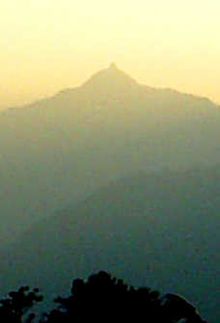Vat Phou
There was a sanctuary on the site, centred on a sacred spring and an offering place for a mighty tutelary sprit dating back to pre-historic times.
Including the barays (reservoirs), it stretches 1.4 kilometres (0.87 mi) east from the source of the spring, at the base of a cliff 100 metres (330 ft) up the hill.
Each consisted of a rectangular courtyard with a corridor and entrance on the side towards the axis, and false doors at the east and west ends.
Continuing west, successive staircases lead up further terraces; between them stands a dvarapala which has come to be worshiped as king Kammatha, mythical builder of the temple.
The front section, of sandstone, is now occupied by four Buddha images, while the brick rear part, which formerly contained the central lingam, is empty.
Water from the spring which emerges from the cliff about 60 m southwest of the sanctuary was channeled along stone aqueducts into the rear chamber, continuously bathing the lingam.
There are other carvings further north: a Buddha footprint on the cliff face and boulders shaped to resemble elephants and a crocodile.
The crocodile stone has acquired some notoriety as being possibly the site of an annual human sacrifice described in a sixth-century Chinese text.
The most remarkable feature of the Vat Phou complex is that it shows the development of the Khmer stone architecture from its earliest beginnings until the 13th century.
With the Lao-UNESCO projects starting in 1987 and the designation as UNESCO World Heritage Site in 2001 archeologic and conservation activities increased heavily.
Examples of the most recent conservation projects are:[4] Today the site is open to the public for religious activities and tourist visits.









